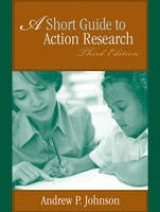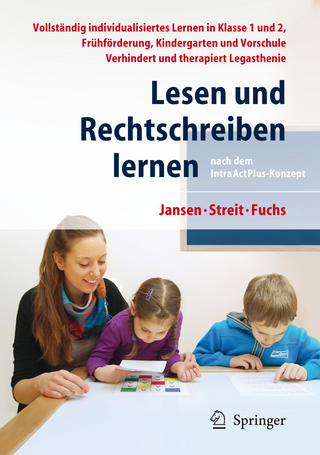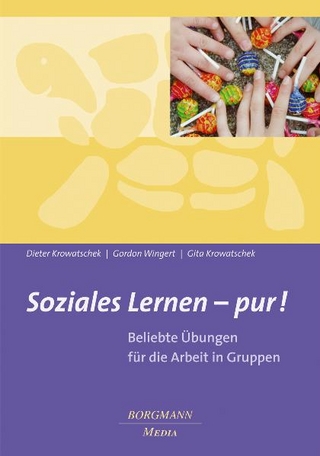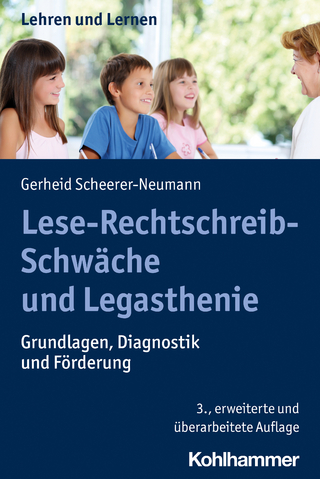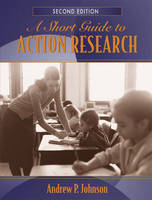
A Short Guide to Action Research
Pearson (Verlag)
978-0-205-41253-2 (ISBN)
- Titel erscheint in neuer Auflage
- Artikel merken
This compact, user-friendly text provides everything a pre-service or in-service teacher needs to know to conduct an action research project, in a clear, step-by-step presentation.
This text guides the learner through comprehension and interpretation of both qualitative and quantitative techniques in action research methods and then describes all phases of the process, including selecting a topic; collecting, analyzing, and reporting data; reviewing the literature; and presenting the report.
This text can be used for simple action research projects or for masters theses and dissertations. More examples, ideas for possible research questions, many new forms and graphics have been added to this edition. There are also many new strategies and examples of projects that can be used for professional growth and development included with this edition.
Andrew Johnson is Professor of Holistic Education in the Department of Educational Studies: Special Populations at Minnesota State University, Mankato. Here he specializes in gifted education, holistic education, literacy instruction, academic and professional writing, and spiritual intelligence. He worked for 9 years in the public schools as a second grade teacher, wrestling coach and as a gifted education coordinator before moving into higher education. His most recent books include Making Connections with Elementary and Middle School Social Studies published by Sage Publications and The Inner Curriculum: Classroom Activities to Develop Emotional Intelligence published by Royal Fireworks Press. He can be reached for comment at: andrew.johnson@mnsu.edu. For information related to workshops and professional development opportunities go to: www.teachergrowth.com
Each chapter concludes with "Summary."
I. RATIONALE.
1. Science, Research and Teaching.
Science.
Research.
Teaching.
2. Research Paradigms and the Nature of Reality.
Metaphysical Perspectives.
Implications.
3. Introduction to Action Research.
Research in Action.
The Importance of Action Research.
4. Using Action Research for Solving Problems.
Finding the Problem.
Finding Solutions.
Testing Solutions.
An Example of Action Research and Problem Solving.
5. Strategies for Professional Growth--Preservice and Inservice Teachers.
Preservice Teachers: A Tool for Seeing.
Professional Development Schools.
Action Research and the Professional Development of Teachers.
II. THE PROCESS.
6. The Beginning.
An Overview of the Action Research Process.
Finding Your Research Topic.
7. A Theoretical Context.
Reviewing the Literature.
Sources for the Literature Review.
Sample Literature Reviews.
8. Methods of Collecting Qualitative Data
Data Collection.
Types of Data Collection in Action Research.
9. Methods of Analyzing Qualitative Data
Accuracy and Credibility: This Is What Is.
Validity, Reliability, and Triangulation.
Inductive Analysis.
10. Quantitative Design in Action Research
Correlational Research.
Causal-Comparative Research.
Quasi-Experimental Research.
The Function of Statistics.
11. Discussion--Your Plan of Action
Conclusions and Recommendations.
Evaluation of the Study.
Designing a New Plan or Program.
VI. SAMPLES.
12. Sample Action Research Projects.
A Final Word.
VII. WRITING AND REPORTING ACTION RESEARCH.
13. Presenting Your Action Research.
Where to Share Your Action Research.
The Educational Environment.
The Professional Environment.
Local Community Organizations.
14. Writing an Action Research Report.
Tone and Style.
Length.
Clarity.
Headings.
15. Action Research as Master's Thesis.
Before You Start.
The Action Research Thesis.
The Last Word.
16. The Literature Review.
A Theoretical Context.
A Sample Literature Review.
The Reference Page.
17. Findings--Reporting Qualitative Data.
Presenting Qualitative Data.
The Importance of Structure.
Case Studies or Representative Samples.
Appendices.
18. Findings: Reporting Quantitative Data Using Tables, Figures, and Graphs.
Quantifying Reality.
Tables.
Figures.
Epilogue.
| Erscheint lt. Verlag | 2.9.2004 |
|---|---|
| Sprache | englisch |
| Maße | 178 x 235 mm |
| Gewicht | 429 g |
| Themenwelt | Geisteswissenschaften ► Psychologie ► Pädagogische Psychologie |
| ISBN-10 | 0-205-41253-X / 020541253X |
| ISBN-13 | 978-0-205-41253-2 / 9780205412532 |
| Zustand | Neuware |
| Informationen gemäß Produktsicherheitsverordnung (GPSR) | |
| Haben Sie eine Frage zum Produkt? |
aus dem Bereich
